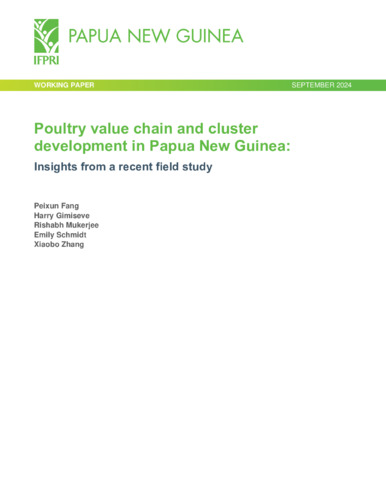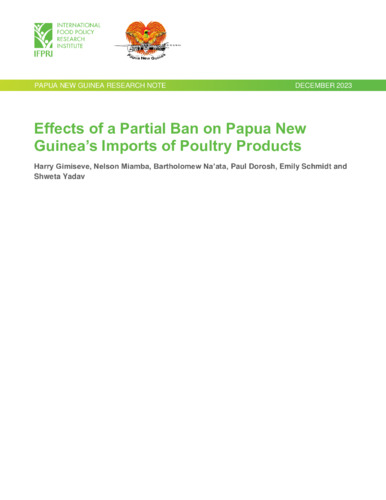Poultry value chain and cluster development in Papua New Guinea: Insights from a recent field study
Despite poultry being lauded as a relatively affordable source of protein and micronutrients in many lower-income countries, chicken meat is twice as expensive in PNG compared to nearby Southeast Asian countries. Recent rural household consumption data collected by the International Food Policy Research Institute (IFPRI) suggests that an important share of households do not eat enough protein to meet healthy dietary guidelines (Schmidt et al., 2024). Poultry, along with fish and pork, are the three most important animal-source protein foods in the country, yet these products remain financially prohibitive to a large share of the population.
This paper explores the unique challenges and opportunities within PNG’s poultry sector using a “growth diagnostic” approach (pioneered by Rodrik, 2010). Through interviews with key stakeholders across the poultry value chain, we found that while high feed costs persist as a significant challenge, poultry farmers have yet to adopt additional cost-reduction strategies, such as establishing small-scale regional feed mills, utilizing local feed ingredients, and diversifying feed and input imports. An intriguing puzzle of PNG’s poultry sector is the limited number of small-scale producers successfully transitioning to medium-scale operations. This primarily stems from high transport costs and restricted access to input and sales markets. The challenges of marketing chicken in PNG have received less attention than production. Drawing on the experiences of successful models in other countries and considering the specific situation of PNG’s poultry sector, fostering poultry production and processing clusters (e.g., in Lae suburban areas) emerges as a potential strategy to address production, transportation, and marketing constraints. By concentrating production, value chain clustering can enhance access to essential services (e.g. slaughtering and cold storage), improve market access, and reduce overall costs. While clustering holds promise for PNG’s poultry value chain, its success hinges upon joint action between the public and private sectors, as well as NGOs operating within the value chain.
Authors
Fang, Peixun; Gimiseve, Harry; Mukerjee, Rishabh; Schmidt, Emily; Zhang, Xiaobo
Citation
Fang, Peixun; Gimiseve, Harry; Mukerjee, Rishabh; Schmidt, Emily; and Zhang, Xiaobo. 2024. Poultry value chain and cluster development in Papua New Guinea: Insights from a recent field study. Papua New Guinea Working Paper. Washington, DC: International Food Policy Research Institute. https://hdl.handle.net/10568/152443
Country/Region
Papua New Guinea
Keywords
Oceania; Poultry; Households; Livestock Feed; Value Chains
Access/Licence
Open Access







